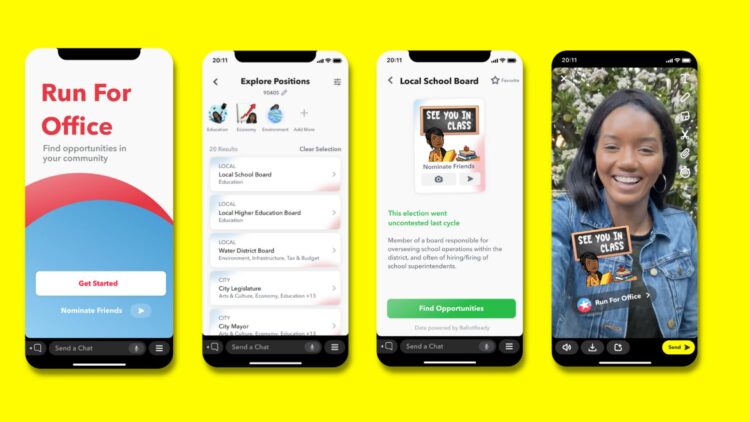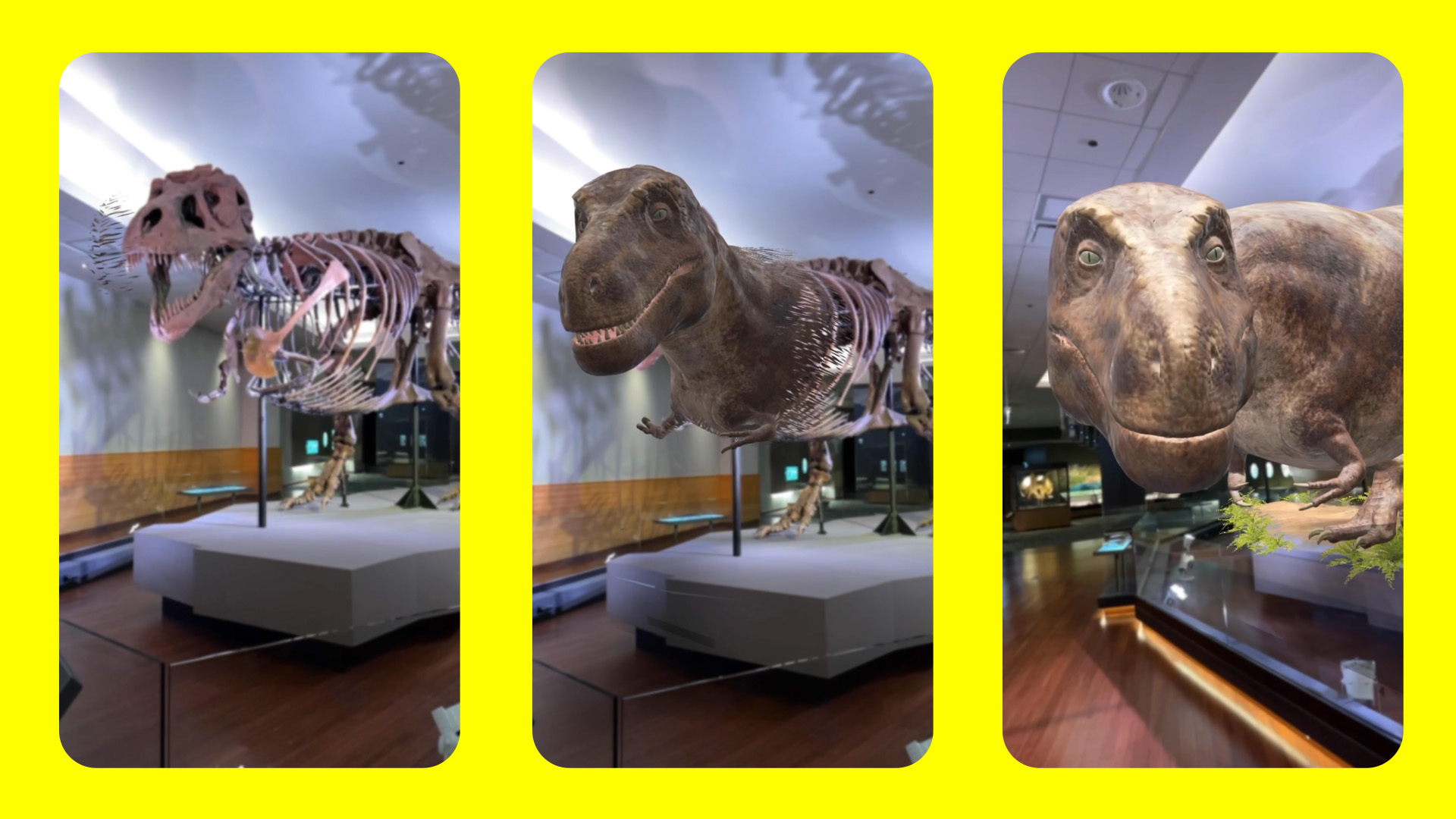Snap reveals AR features for shopping, branding, and inclusivity

At Snap’s Partner Summit 2022, the social media company unveiled a slew of new augmented reality features that it says will “[improve] the way we live, learn, communicate, and even shop”.
Major announcements included:
– New tools for businesses to build AR shopping experiences.
– AI-powered shopping Lenses for trying on outfits without having to change clothes.
– A new “Dress Up” category on Snapchat dedicated to shopping.
– A “more inclusive” camera, including improved capturing of dark skin tones and American Sign Language Lenses.
– Updates to Snap’s Lens Studio with improved analytics and privacy, with the near-term addition of Ray Tracing.
– A Lens Cloud for developers to store their assets.
– The continued expansion of location-based AR services.
– A multi-year partnership with Live Nation.
– A Minis Private Components System for game developers to add social elements to their games, such as ratings, reviews, recommendations, and more while protecting user privacy.
– New features in support of content creators, such as “Director Mode” editing tools and a dual camera mode that allows for simultaneous use of both front and back-facing cameras.
CEO Evan Spiegel also boasted that Snapchat is ranked as the “#1 happiest platform”, reaching over 600 million monthly and over 320 million daily active users globally. He added that the company also works with over half a million partners, creators, and developers to provide products, services, and advertising.
The Summit, themed “Back to Reality”, focused primarily on how new AR features can be used both for fun and, increasingly, as utilities.
“We believe that AR is the next major shift in computing, and the key to that is the camera,” UK general manager Ed Couchman told The Media Leader.
Couchman added: “We think the real world is a fantastic place. We want to enhance it, not take people away from it.”
AR developers have built over 2.5 million Lenses that have been viewed over 5 trillion times, and Snap’s Lens Studio will soon feature Ray Tracing to make AR elements more realistic.
And Snap showcased updates to its Spectacles line of AR glasses, featuring voice ML, 3D hand tracking, and connected Lenses.
‘AR is moving from fun to a utility’
Shopping features are likely to draw attention from fashion brands – new AR lenses will allow users to virtually try on clothes and purchase items they like directly from the app.
The feature is not unlike the opening scene of the 1995 movie Clueless, in which Cher’s computer creates an image of what she will look like wearing her iconic yellow plaid jacket and skirt before she dons the outfit.
Couchman confirmed to The Media Leader they used the scene as part of their sales pitch to brands.
“Virtual try-on really accelerated during the pandemic,” says Couchman.
Since January of last year, more than 250 million users have engaged with AR shopping Lenses.
What began as overlaying shoes has rapidly advanced to other clothing items and beauty products, and Snap is further investing in a new Snap 3D Asset Manager to allow businesses to build AR shopping experiences more efficiently.
Further, with the addition of “Dress Up”, Snapchat is dedicating a whole page to shopping on their app.
The company hopes the technology will cut down on “bracketing”, the practice of ordering multiple sizes and/or colors of clothing items when online shopping, trying them on at home, and returning all but the ones that fit properly and are preferred.
Vogue wrote in January that almost 15% of returned online purchases from multi-brand retailers were attributed to the practice, with one Narvar study finding 58% of consumers intentionally buy more goods than they intend to keep.
At best, bracketing creates unneeded warehouse shortages, unfilled backorders, and a larger carbon footprint from additional shipping. At worst, up to 50%-60% of returned items can’t be resold, contributing to massive waste that has plagued the fast-fashion industry.
On top of giving fashion brands new ways to directly reach customers without the need for a brick-and-mortar outing, Couchman said, hopefully, virtual try-on will lead to a reduction on returns.
And, in addition to “Dress Up”, a new paid fashion platform is also dropping for Bitmoji, of which over 1 billion avatars have been made on Snapchat.
‘Using technology for good’
Also among the announcements is a new, more inclusive camera that better picks up on dark skin tones, as well as new fingerspelling American Sign Language Lenses which allow deaf communities to teach and communicate better over the social media service.
“This is a very clear demonstration of using technology for good,” Couchman said.
The additions are part of a broader effort to present their AR as a way to contribute to social causes.
For instance, the company highlighted that 4 million young Snapchatters have used the Run For Office mini (pictured-main), which hopes to inspire political engagement by helping users run for local elected positions that have historically been uncompetitive.
Snap has also recently sought to use the technology to, in Couchman’s words, “tell hidden stories” such as by adding virtual portraits from underrepresented artists to London’s National Portrait Gallery or adding a virtual statue of Nelson Mandela in Trafalgar Square with a transcript of his 2005 Make Poverty History speech.
Doing so requires complicated location-based AR functions, and Snap has partnered with a host of brands and businesses to use the technology, from Disney, Paramount, and LEGO to the Chicago Field Museum and Children’s Hospital Los Angeles.

Snap also seeks to expand AR into live music with its multi-year partnership with Live Nation, which will offer creative opportunities for musical performers beginning with Electric Daisy Carnival in Las Vegas this May.
The announcements at the Summit appear to be part of a broader philosophy at Snapchat to move beyond only “fun” as the company seeks to grow.
Couchman summarised this growth journey as: “We started off with doggy ears on Lenses and then we moved on to utility.”




